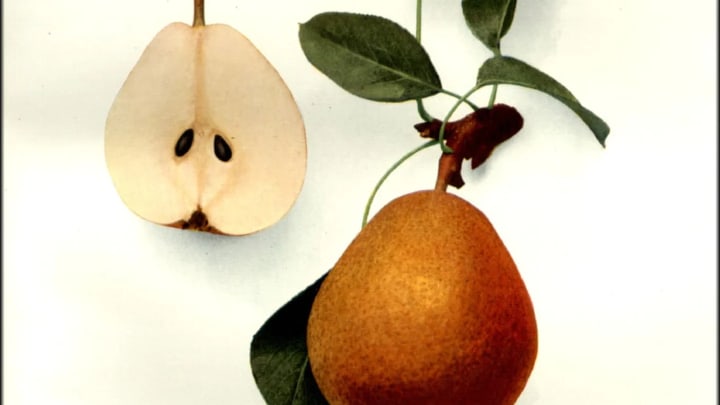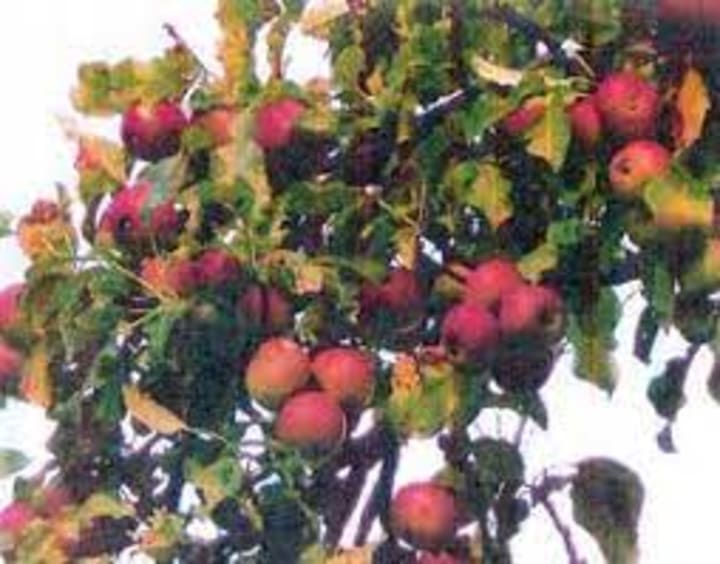11- Historical Extinct Foods
historical foods

U.P. Hendrick, a writer from the early 19th century, described the Ansault pear as a fruit "of the highest quality." The pear is thought to have vanished soon after those lines were written, so we'll have to take his word for it. One of the several fruits, vegetables, and meats that will never be consumed again. These are the meals from history that you can no longer consume, regardless of whether they were eaten to extinction or perished due to other circumstances.
1. Ansault pear

The Ansault pear was first discovered very recently compared to other items on this list. The fruit was first grown in Angers, France, in 1863, and was praised for its delicious flesh. Hendrick stated that "the flesh is notable and is described by the word buttery, so common in pear parlance, somewhat better than any other pear" in his 1917 book The Pears of New York. The fruits are of the greatest grade because of their pronounced yet delicate aroma and rich, sweet flavor.
The decline of commercial farming and irregular trees were factors in the demise of the fruit. Commercial growers didn't want to waste effort on temperamental strains when other pear kinds were readily accessible to them because ansault pear trees were impracticable to grow in vast orchards. The pear was no longer grown in nurseries by the early 20th century, and it was extinct.
2. Passenger pigeon

For ages, people feasted on passenger pigeons. For the Seneca people, it was such an essential food source that they gave it the name jah'gowa, or "big bread." Unfortunately, the North American bird was far too delectable to be healthy. By 1900, there was just one left, down from as many as 3 billion in the early 1800s due to hunting, habitat destruction, and food shortages. At the Cincinatti Zoo in Ohio, that endling, a captive pigeon called Martha after America's first First Lady, passed away in 1914.
3. Auroch

Although the Aurochs may have been referenced in Game of Thrones, they shouldn't be grouped with dragons. In the early stages of agriculture, the actual cattle species was domesticated 10,000 years ago. They were larger and leaner than current cows ("little below the elephant in size," according to Julius Casear). The last aurochs perished in a Polish woodland in the 17th century as the species declined due to illness and habitat degradation. The goal of new breeding programs is to preserve the species, or at the very least, create a new animal that is somewhat similar. One contemporary aurochs-like cow's meat is said to be juicy, tender, and "wild" tasting.
4. Silphium


This plant with a leek taste had various purposes for the ancient Greeks and Romans. While its sap was preserved and used as flavoring on numerous foods, its stalks were cooked and eaten like vegetables. It was also used medicinally, and its heart-shaped seeds may be the reason why people still identify the shape of love with it. It was reportedly a successful method of birth control. Silphium could not be farmed and only grew in a 125 by 35 mile area of land in present-day Libya; demand for the priceless plant rapidly surpassed natural supply. Only one silphium plant was discovered in his lifetime, according to Pliny the Elder, and it was sent to the Roman emperor Nero somewhere between 54 and 68 CE.
5. Dodo

After being discovered by Dutch explorers in 1598, the Mauritius island chain saw the extinction of its native dodo less than 200 years later. The main causes of the birds' extinction were habitat loss and the introduction of invasive species like rats and pigs, not the fact that sailors relied on the birds for nutrition during lengthy sea trips. Although dodo flesh was consumed by humans, it was more for survival than for flavor. Benjamin Harry, an English seaman who was the last person to see a dodo, described its flesh as "very hard." The term for dodo in Dutch was walghvodel, which means "disgusting bird."
6. Steller’s sea cow

In the Bering Sea, near the Commander Islands, German scientist Georg Wilhelm Steller named the Steller's sea cow in 1741. It was far bigger than the sea cows that are living now, reaching lengths of up to 30 feet. Also, it was quite tasty. The fat reportedly tasted like almond oil, while the salty flesh was compared to corned beef. According to reports, sailors drank the liquidized blubber from cups. Less than 30 years after it was first mentioned, Steller's sea cows were driven to extinction. They were a source of leather, lamp oil, and meat.
7. Mammoth

The flesh of wooly mammoths played a significant role in the diets of the earliest members of the human family. Because we consumed them in such large quantities, hunting may have had a role in their demise about 2000 BCE (though climatic change was probably a greater impact). Even though they have been extinct for thousands of years, a number of contemporary researchers and explorers claim to have sampled mammoth meat. Mammoth specimens may theoretically be thawed and eaten because they are frequently discovered in the icy Arctic in excellent preservation. Meat that has been frozen for so long turns into putrid mush when defrosted, which unfortunately doesn't provide us with much information about how the game must have tasted tens of thousands of years ago. Good appetite.
8. Taliaferro apple

At Monticello, Thomas Jefferson raised Taliaferro apples. Jefferson said in a letter to his granddaughter from 1814 that the little fruit made "unquestionably the finest cyder we have ever known, and more like wine than any liquor I have ever tasted which was not wine." Some horticulturists still believe that the apple is still alive, despite the widespread belief that it perished along with the estate's original orchard. However, even if we were to uncover Jefferson's apple, we probably wouldn't be able to identify it because there aren't many documented descriptions of it.
9. Great auk

Prior to the mid-19th century, great auks were hunted for food, but modern people largely slaughtered them for their down, which caused the species to go extinct. As far back as 100,000 years ago, according to fossil evidence, Neanderthals were roasting the flightless birds over campfires. Pudding was made by the Beothuk people of what is now Newfoundland, Canada, using great auk eggs.
10. Ancient bison

Bison antiquus, or the ancient bison, went extinct 10,000 years ago, before the American bison was almost driven to extinction in the 19th century. Bones that have been found contain signs of tool-assisted butchery. This shows that Native Americans used ancient bison in the same way they use current bison as a source of food.
11. Old Cornish Cauliflower

Although the flavor of old Cornish cauliflower wasn't particularly well known, it did offer one benefit over other types. The veggie proved immune to the damaging Ringspot plant virus. Old Cornish cauliflower was extinct by the 1950s because European producers started replacing it in the 1940s with a French variety that transported better. Ringspot has therefore destroyed the cauliflower harvest in several parts of Britain.






Comments
There are no comments for this story
Be the first to respond and start the conversation.